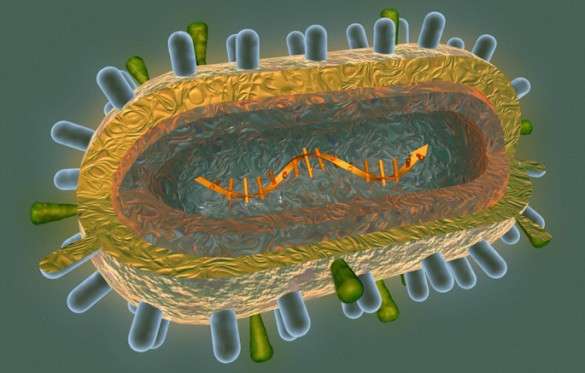Enzyme Holds the Door for Influenza
 The enzyme phospholipase D (PLD) helps the influenza virus escape the immune response. Blocking it could lead to a new way to prevent the flu, Vanderbilt University researchers report in the Journal of Biological Chemistry.
The enzyme phospholipase D (PLD) helps the influenza virus escape the immune response. Blocking it could lead to a new way to prevent the flu, Vanderbilt University researchers report in the Journal of Biological Chemistry.When a compound developed at Vanderbilt University was used to block a specific form of the enzyme, PLD2, influenza virulence in cell cultures dropped and survival after infection in a mouse model was prolonged.
Normally the virus slips into its host cell in the epithelial lining of the lungs through internalized membrane compartments called endosomes. By delaying this process, the researchers propose, PLD2 inhibitors may give the cell’s innate immune response more time to destroy it.
The compounds are effective against the potentially pandemic influenza strains H3, H5 and H7, as well as common seasonal strains. Previous work has shown that they are not overtly toxic. The researchers are hopeful that they may add to the influenza armamentarium.
Source: Vanderbilt University [1]